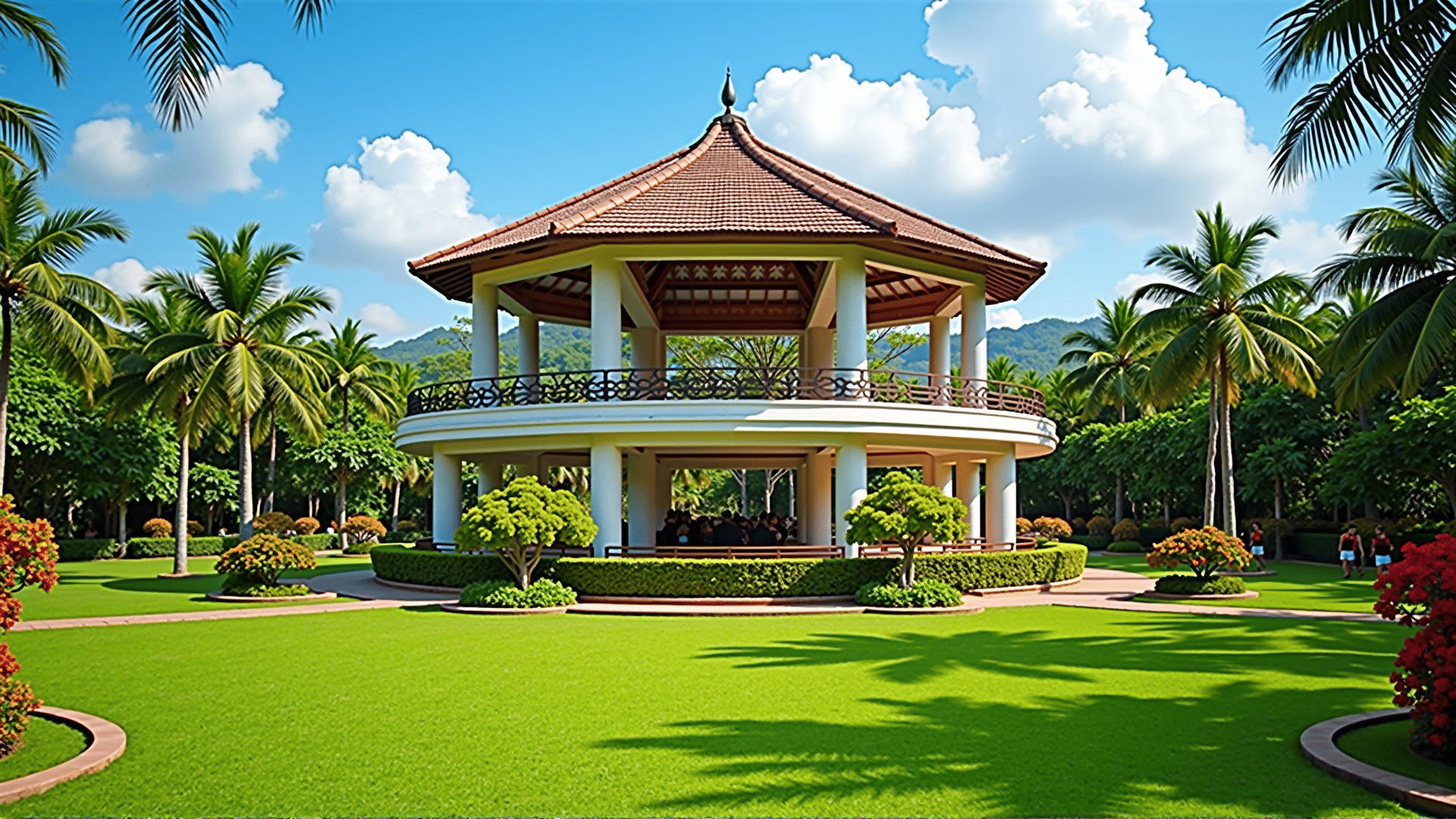Nestled in the vibrant heart of Manila, the Coconut Palace stands as a testament to the imaginative and often eccentric architectural pursuits of the late 20th century. Commissioned by former First Lady Imelda Marcos, this unique guest house is not only a striking creation but also a building deeply intertwined with the spirit and culture of the Philippines.
Constructed in the early 1980s, the Coconut Palace epitomizes the inventive use of natural materials, with a primary focus on the coconut tree. Known locally as the "Tree of Life," every part of the coconut is utilized in the design, symbolizing sustainability and the resourcefulness of nature. From its intricately crafted ceilings and doors to its polished furnishings, each element showcases the many uses of this versatile plant.
The architectural style of the palace blends traditional Filipino design with modern influences, creating a look that is both timeless and elegant. The use of coconut timber, shell, and fiber throughout the construction highlights an adherence to eco-friendly principles, which was quite forward-thinking for its time. The inclusion of capiz shells in the windows and local hardwoods further encapsulates a dedication to highlighting Philippine materials and craftsmanship.
Beyond its aesthetic value, the Coconut Palace holds a deeper cultural significance. It serves as an emblem of Philippine heritage, bringing attention to indigenous artistry and promoting the nation’s identity on a global stage. The palace has hosted a variety of distinguished guests over the years, each experience graced by the building's unique charm and hospitality.
Surrounding the palace is a lush garden, complete with native flora that accentuates the building’s natural theme. This oasis provides a serene escape from the bustling city life of Manila, inviting visitors to relax and absorb the tranquil ambiance.
In the context of modern architecture, the Coconut Palace remains a marvel—a fusion of innovation, respect for natural resources, and cultural pride. It continues to intrigue and inspire architects, artists, and visitors from around the world.
Today, the Coconut Palace functions not just as a landmark, but as a reminder of the creativity and resilience inherent in Filipino culture, encapsulating the spirit of using what is available to create something extraordinary.
